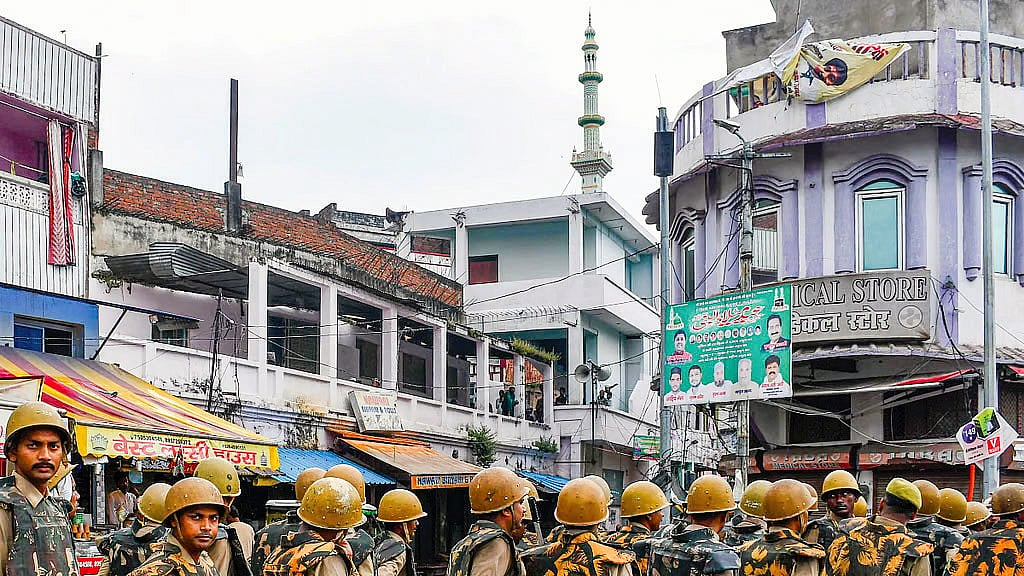Nation
In Bareilly, fear lingers long after the violence
Conversations are hushed, movements cautious and eyes flicker with a sense of unspoken fear

Nearly a fortnight since communal clashes erupted in one part of Bareilly, the entire city continues to bear the brunt and remains in the grip of unease.
Daily life has resumed and appears normal. Shops, schools and offices are open, markets abuzz and traffic flows, yet the city appears to have lost much of its mojo. Conversations are hushed, movements cautious and eyes flicker with a sense of unspoken apprehension. The violence may have ended, but fear has taken root.
The Islamia Inter College ground, where clashes between people and the police on 26 September following a call to assemble by Maulana Tauqeer Raza, chief of the Ittehad-e-Millat Council (IMC), is now locked and out of bounds for all. The aftermath of the clash saw 91 ‘miscreants’ arrested, 85 of whom are in judicial custody.
Whispered voices speak of community members caught in the wrong place at the wrong time. Of an imam arrested while buying food or of a factory worker detained when he stepped out for evening prayers. Hardly the faces of violence, they say.
Outside the shuttered college ground, police personnel lounge in chairs, scrolling through their phones. The familiar figure of Rafiq, who sells paan from the adjacent kiosk, reappeared after 12 days. Though most shops in the locality had reopened after two or three days, he says by way of explanation, “I have four stents and can no longer cope with panic.”
The normally crowded road to Biharipur Dhal is quiet on Tuesday, 7 October. Cops could be seen idling near the Jain temple located on the approach road to the shrine of Ala Hazrat. At the nearby Kumar Talkies, food and fruit vendors go about their business, but the parking lot is deserted. In the lobby, a policeman sprawled on a sofa watches videos on his phone, a surreal image of detachment in a city on edge.
Published: undefined
Satish, a Malukpur resident, who commutes daily through Biharipur, sums up the prevailing mood: “People are out, yes, but something is amiss. Senior citizens, who gathered outside for extended sessions of gossip, chat and laughter have gone missing.”
Chandu, the grocer, is unnerved by policemen who raided his locality at 2.00 am in search of Afzal Beg, an IMC leader. Beg was not found but residents were robbed of their sleep, says Chandu who has forbidden his school-going son from stepping out to play.
Conversations in this troubled town now begin and end with the same question: who gained from the breach of peace? The answers are also the same. Apart from those who cash in on trouble, the political mainstream and fringe elements, miscreants and cops, everyone else is a loser. The city’s pride is dented.
The appearance of bulldozers on 4 October created fresh panic, amplified by TV channels. Octogenarian Zameer Ahmed, a bookseller at Sailani Square, says, “I’ve never seen a media that spreads so much falsehood. They said hundreds of shops were demolished here. Come see for yourself.”
“Punish the guilty, but why target the entire community?” he asks. The plan to polarise people and divide them, he fears, will harm not just the city but also the entire country.
The panic is such that on Fridays, when Muslims congregate to offer prayers, a section of Hindus and Muslims have stopped sending their children to school, he says with a tinge of sadness.
Maulana Tauqeer Raza himself remains a contentious figure. In 2010, too, he was arrested for allegedly inciting communal violence. His political ambitions through the IMC is no secret either.
Published: undefined
His call for a protest march to the Collectorate after Friday prayers on 21 September was widely publicised. The administration held several rounds of meetings with him and the IMC called off the march. Yet, inexplicably, clashes broke out on 26 September and the maulana was arrested the next day.
There is an emerging consensus that actions by the administration and the police were in response to the provocative statements by chief minister Yogi Adityanath on both the days. Far from calming tensions, his statements may have added fuel to the fire.
If socio-economic factors lead to communal riots, then why were cities like Bareilly, Jaunpur and Allahabad untouched by the virus, questioned Steve I. Wilkinson in his book, Votes and Violence: Electoral Competition and Communal Riots in India, published by Cambridge University Press.
Wilkinson had visited Bareilly in 1995 while researching for his book and had argued that socio-economic conditions of Moradabad, Meerut, Aligarh or Ahmedabad singed by riots were no different from Bareilly or Allahabad, which remained peaceful.
His observations were rooted in the reality on the ground. Even during these disturbances in Bareilly, Ramlila staged daily at the Windermere Theatre had Danish Khan playing Vishnu and Ram. Hindu devotees continued to visit the Lakshminarayan temple built by Fazlur Rehman. In Nayatola, Sanjay Sharma, a descendant of Pandit Daate Ram, who constructed the mosque there, still retains a key and priodically goes and cleans it.
But there are signs that the communal harmony has begun to fray. This year, Shafi, who has been playing Shatrughana in the Ramlila for several years, withdrew. “I didn’t feel comfortable anymore,” he says by way of explanation.
The destroyers of peace in Bareilly — political actors, media agents or fringe groups — will indeed rejoice in this division. But for the city’s residents, the cost is heavy. Fear may be invisible, but its grip is iron-clad.
Published: undefined
Follow us on: Facebook, Twitter, Google News, Instagram
Join our official telegram channel (@nationalherald) and stay updated with the latest headlines
Published: undefined